#Song Dynasty (960–1279 AD)
Text
[Hanfu · 漢服]Chinese Song Dynasty (960–1279 AD)Traditional Clothing Hanfu Reference to Song Dynasty Sculpture


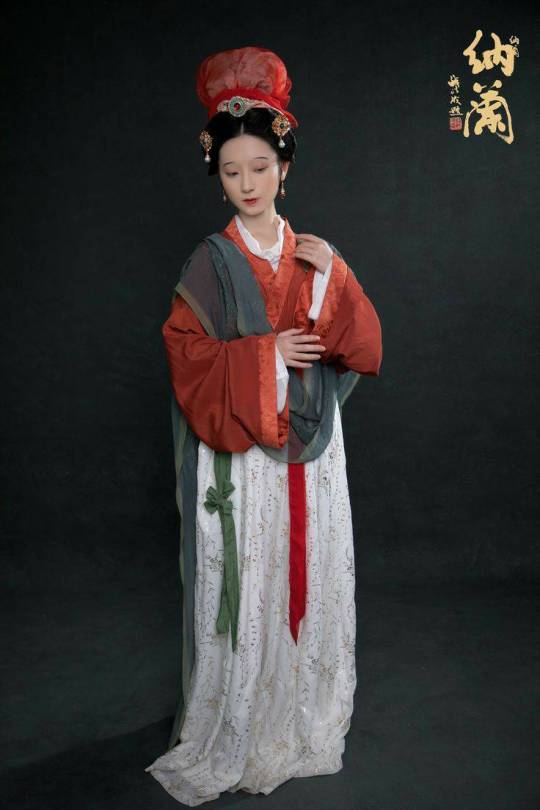

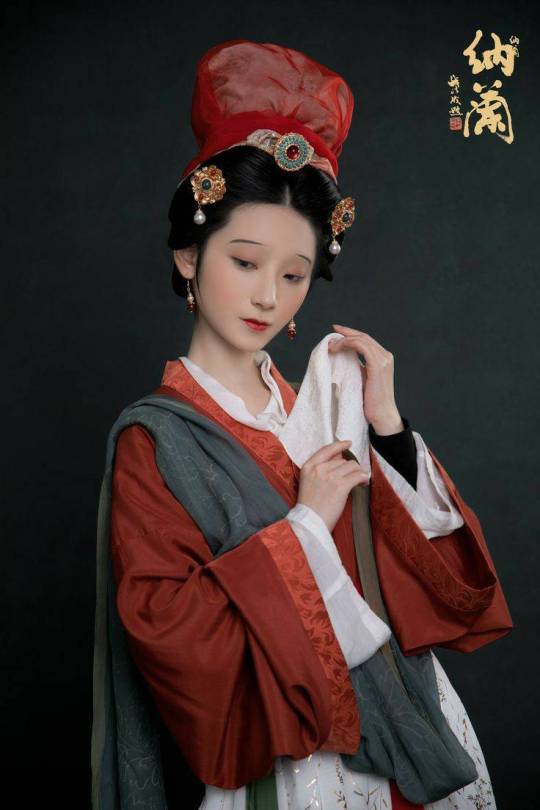
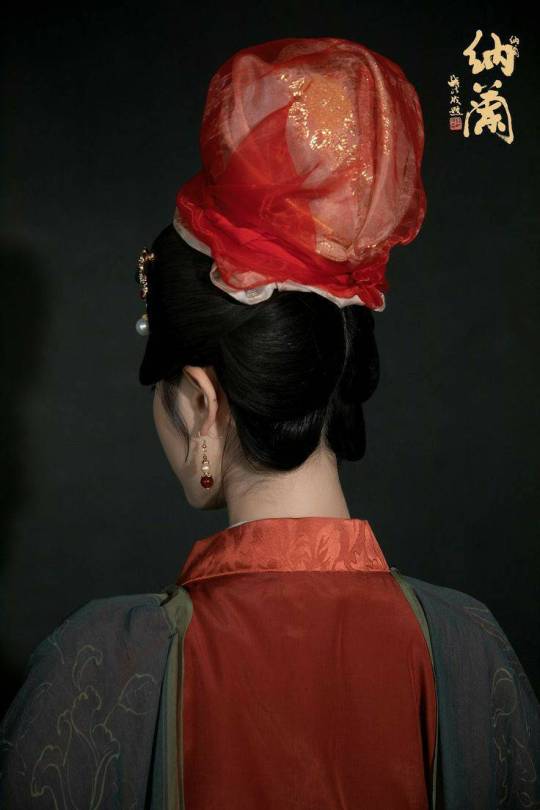
【Historical Reference Artifacts】:
China Song Dynasty Painted Sculpture from【Jin Temple】晋祠宋代彩塑
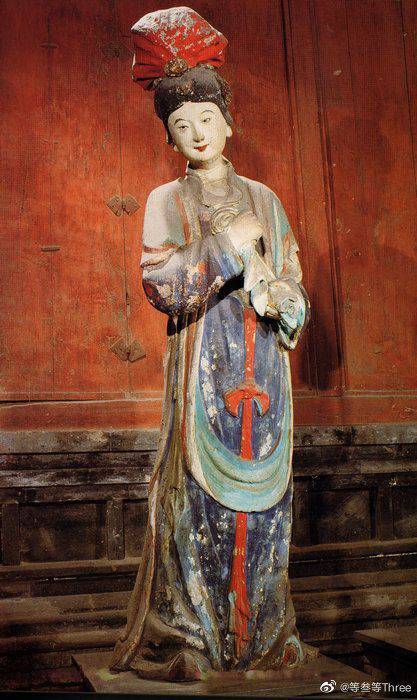
▶️【About Hairstyle“包髻/Bao Ji”】:
It is one of the hairstyles of ancient Han women.
包髻/Bao Ji is a hairstyles that use rectangular headscarf to cover the hair. When worn, it is folded diagonally, wrapped from the front to the back, and then wrapped around the corner of the scarf to the front of the forehead to tie a knot.
As early as the Tang Dynasty(618-907 AD), there was a prototype of this hairstyle, and it became popular in the Song Dynasty.
Women in the Ming Dynasty(1368-1644 AD) liked to use black gauze to make this hairstyle and this kind of hairstyle survived until the last dynasty of China: the Qing Dynasty.
#chinese hanfu#Song Dynasty (960–1279 AD)#hanfu#hanfu accessories#hanfu_challenge#chinese traditional clothing#china#chinese#chinese history'#chinese fashion history#chinese historical hairstyle#chinese art#漢服#汉服#中華風#包髻/Bao Ji#Jin Temple
208 notes
·
View notes
Text
“How Often Does Such a Bright Moon Come Around?” (水調歌頭 · 明月幾時有) Translation
(Another year, another Mid-Autumn Festival, another poem translation. This particular poem is very famous because of the first and last lines, which are frequently referenced in popular culture. Happy Mid-Autumn Festival!)
How often does such a bright moon come around?
By Su Shi (Song dynasty, 1076 AD)
Mid-Autumn of the year Bingchen (2), drank all night in celebration, became heavily inebriated. Composed this poem to commemorate this occasion, and in dedication to Ziyou (3). (4)
How often does such a bright moon come around? With wine in hand, I ask the heavens.
Wondering what year it is for this day in heaven (5), in the palace high above.
Wishing to ascend on the wind, yet I cannot stand the chilly air around those lofty towers of jade.
Dancing and amused at my own crisp shadow, the frigid heavens surely cannot compare to the mortal realm below.
Rounding the vermilion building, hanging low near the intricate windows, the moon casts light over the sleepless (6).
The moon should not feel bitter jealousy, so why is it only full on parting?
Humans feel grief and joy, partings and reunions, just as the moon waxes and wanes.
For both of these heartening things (7) to happen together is very rare indeed.
May we be blessed with longevity, so that even when thousands of li (8) apart, we can still gaze upon this wonderful moon together.
—————————-
Notes:
This poem is in the Ci/词 format, and follows the rhyme scheme (Cipai/词牌) called Shuidiaogetou/水調歌頭/水调歌头.
Bingchen/丙辰 is a year in the Chinese Sexagenary Cycle, which is known in Chinese as Tiangandizhi/天干地支 ("Heavenly Stems and Earthly Branches") or simply Ganzhi/干支 ("Stems and Branches"), and is used to record time. This system has been in use since at least the Shang dynasty around 3000 years ago (oracle bone artifact bearing inscriptions of ganzhi has been found at Yinxu/殷墟, the archaeological site of the ancient capital of Shang dynasty; however, during Shang dynasty the Ganzhi system was used to track days and not years, unlike how it has been used in later times). Because there are 60 years in one cycle, it is possible to trace back to specific years. In this case, Bingchen would be exactly 1076 AD.
Ziyou/子由 is the courtesy name of Su Shi's brother, Su Zhe/蘇轍.
This section is a short introduction to the poem, which begins after this section.
This may be a reference to the concept that "a day in heaven is a year on earth" ("天上一天,地上一年"; famously included in Journey to the West), which in turn is a reference to the ecliptic plane (called Huangdao/黄道 in Chinese), since for an observer on Earth, the Sun appears to move in an elliptical path throughout the year. This means that it takes a year (i.e. "a year on earth") for the Sun to "complete" one round in this elliptical path (i.e. "a day in heaven").
Here, "the sleepless" is a reference to the poet himself.
"Both of these heartening things" refers to reunion with family and/or friend, and the occurence of a full moon.
Li/里 is a traditional unit of distance. During Su Shi's time (Northern Song dynasty, 960 AD - 1279 AD), 1 Li ≈ 576 meters = 0.576 km or 0.36 miles (Note: link leads to pdf).
—————————-
Original Text (Traditional Chinese):
《 水調歌頭 (1) · 明月幾時有 》
[宋] 蘇軾
丙辰中秋,歡飲達旦,大醉,作此篇,兼懷子由。
明月幾時有?把酒問青天。不知天上宮闕,今夕是何年。
我欲乘風歸去,惟恐瓊樓玉宇,高處不勝寒。起舞弄清影,何似在人間。
轉朱閣,低綺戶,照無眠。不應有恨,何事長向別時圓?
人有悲歡離合,月有陰晴圓缺,此事古難全。但願人長久,千里共嬋娟。
#mid autumn festival#midautumnfestival#chinese poem#poetry#how often does such a bright moon come around#my translation#明月几时有#苏轼
170 notes
·
View notes
Text
Today's apocryphal Sun Tzu quote
The sillier the lie, the more aggressive the liar - and then, silence.

Wei Sheng - Crape myrtle (sketched from life). Dates unknown, Song dynasty (960–1279, AD)
54 notes
·
View notes
Text
“由俭入奢易,由奢入俭难”
"It's easy to go from frugality to extravagance, but hard to return from extravagance to frugality"
The earliest known record of this Chinese proverb came from Song dynasty (960 - 1279 AD) writings, most famously from the letter Sima Guang/司马光 wrote to his son Sima Kang/司马康, titled "Teachings of Frugality for Kang" (《训俭示康》).
15 notes
·
View notes
Text

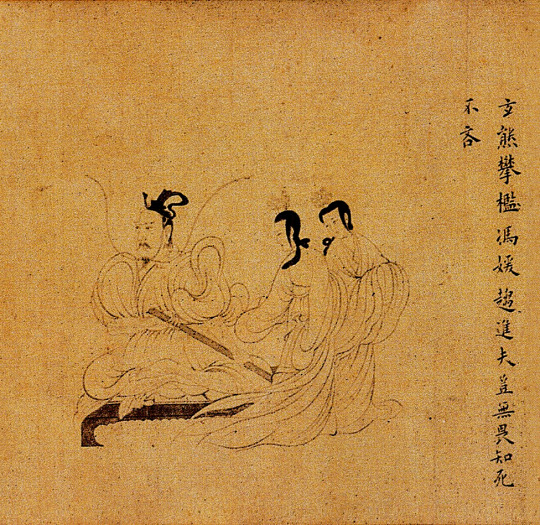

The history of the Chinese Fast Sword Draw (出劍法) dates back to the Han dynasty, 2,000 plus years ago. Unfortunately, there are no known manuals for these techniques and historically illustrations are rare. This depiction of a seated swordsman drawing his sword is from a scroll originally painted by Gu Kaizhi ( 顧愷之) in the 4th century. While Gu’s original version of this scroll, The Admonitions of the Instructress to the Court Ladies (女史箴圖) has not survived, later copies of this work have.
The two following later copies of this scroll date to the Tang (dated between the 6th and 8th century AD) and Song dynasties. As such they are likely the oldest known illustrations of a Chinese Swordsman Preforming the Fast Sword Draw (出劍法). They are also the only know depiction of a seated Chinese sword drawn know to date. Given the age of the two paintings, it is difficult to make out the finer details. What we can see is that seated swordsman’s grip is palm out with his fingers wrapping over the grip prepared to draw and strike downward. His rear hand is well back toward the rear of the scabbard, palm down.
A skeptic might understandable suggest that the seated figure is actually wielding a cudgel. Given the lack of visible detail, this would be an understandable suggestion. However, there is no reason for a wooden club to be gripped at the rear end just prior to swinging it. And given that what appears to be bear is just before the seated man, if it were some sort of cudgel and not a sword ready to be drawn, it is more likely he would be gripping it with two hands not holding the the rear end palm down.
Note: the Tang period example of The Admonitions of the Instructress to the Court Ladies is in the collection of the British Museum in London. The Song period (960-1279) example is the property of the Palace Museum in Beijing.
#出劍法#chineseswordsmanship#jianfa#chineseswordfighting#chineseswordplay#scottmrodell#chinesemartialarts#duanbing#chineseswordsman#chineseswordarts#daoistswordarts#swordfighting#chineseswordfencing#taijiswordfencing#swordfightingskills#kungfuweapons#iaido#scottrodell#testcutting#jianshu#chineseswordart#swordarts#swordsmanship#historicalswordsmanship#swordplay#chinesesword#chineseswords#daofa
6 notes
·
View notes
Text
5 Delicious Ways to Enjoy Chinese Tea
Ever wondered how tea became a staple of Chinese Tea? Or why tea is considered an essential part of their culture? And if you’re wondering, the answer is quite interesting, we’ll tell you that. But before getting into the interesting history of tea in China, let’s discuss some of the health benefits of tea.
The history of tea in China
The history of Chinese Tea goes back over 3,000 years. The tea plant is native to the Chinese continent, but it wasn't cultivated until the Han Dynasty (206-220 AD). During the Tang and Song dynasties (960-1279), tea became a popular drink among the wealthy.
In Chinese culture, tea is considered a sacred drink with many health benefits. There are several types of tea, each with its unique flavor and health benefits. Black tea is also known as green tea, and it's made from black tea leaves that have been steamed or dried. It is high in antioxidants and has been linked to improved heart health and reduced cancer risk. Green tea is made from green tea leaves that have been naturally processed into a bright green color. It contains antioxidants and may help prevent chronic diseases.
Tea brewing is an art form that requires careful preparation and precise timing. Before you brew your tea, you should determine the type of tea you'd like to make. This generally involves choosing between black tea or green tea as well as the amount of leaf used. You can customize your brewing method by using different amounts of water and brewing time per cup. After making your choice, follow the steps outlined in your manual to prepare your favorite beverage. Do not rush through the process; take your time to enjoy each step of the process. When you're done, sit back and enjoy your freshly brewed tea!
5 delicious ways to enjoy Chinese tea
- Make a pot of pu’er tea: Add 2 or 3 spoons of tea leaves to 200ml of water and bring to the boil.
- Make a pot of Assam tea: Boil 1 liter of water, add 800g of tea leaves and simmer for about 20 minutes.
- Enjoy jasmine tea: Steep 1 teaspoon of green tea leaves in 100ml of hot water for about 5 minutes.
- Have a cup of oolong tea: Boil 2 cups of water and add 1 teaspoon of tea leaves.
- Drink white tea hot or cold: Steep 1 teaspoon of white tea leaves in 100ml of cold water for about 3 minutes or steep for about 10 minutes in 100 ml of hot water.
You can try any one of the above methods to enjoy Chinese tea and experience its unique flavor.
Frequently Asked Questions
How do I make Chinese tea?
Making tea is easy! Here's what you need:
1. Bring water to a boil before adding tea leaves.
2. Steep tea leaves for 3-5 minutes before pouring tea into a cup.
What are some common variations of Chinese tea?
Green tea, oolong tea, black tea, pu-erh tea and chai tea are all types of Chinese tea.
Conclusion
Tea has been a vital part of Chinese culture for centuries. It is commonly used as a tea-drinking ritual, and is also an important part of traditional medical practices. Tea is also used in many traditional Chinese foods and beverages, such as tea soup and tea-based oolong tea. If you’ve had enough of the bitter taste of tea and are looking to try some delicious alternatives, here are five delicious ways to enjoy tea.
3 notes
·
View notes
Text
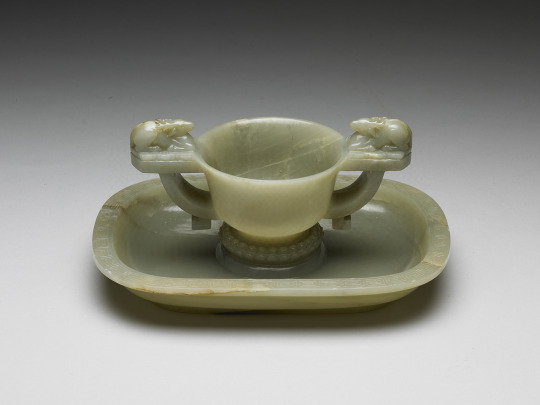
Jade Cup and Saucer, Jade, Qing Dynasty (1644 AD - 1911 AD), Qianlong's Reign (1735 AD - 1796 AD).
Both objects are modest in size. The tray measures 17.6 cm long, 12.7 cm wide and is 2.4 cm high. The cup is 6.5 cm high and the flared edge makes it have a diameter of 7.4 cm.
The foot of the cup is characterized by the overlapping of two concentric circles, the smaller of which is embellished with two rows of small spheres in bas-relief. The central body is simple and devoid of decorations. On the two handles of the cup there are two small sculptures depicting two crouching deers. The choice of this animal is not random: it is in fact a symbol of longevity and prosperity. Since ancient China, the deer was believed to be an auspicious animal, capable of bringing happiness and longevity to human beings, as well as the chosen mount of the deities of immortality, often depicted on the back of a white deer. The presence of the figure of the deer on a jade artefact is nothing new: the first appearance of this animal as a decorative motif dates back to the distant Shang Dynasty (16th-11th centuries BC). The tray follows the simple and refined style of the cup, without decorations, except for the relief motifs on the edge. This decorative module is called yunleiwen 云雷纹, which means "cloud and lightning pattern". Typical of the Chinese artistic tradition starting from the Zhou Dynasty (1046 AD - 256 AD), it began to appear on the edges of jade works especially starting from the Song Dynasty (960 AD - 1279 AD). In the Qing era, this motif was further stylized, appearing as a series of juxtaposed square spirals.
The object is currently located at the National Palace Museum of Taipei and is part of the permanent exhibition "Art in Quest of Heaven and Truth".
1 note
·
View note
Text
Jasmine Tea
Jasmine Tea: Unveiling the Fragrant Elixir of the Orient
Introduction
In the vast landscape of tea, few varieties captivate the senses as profoundly as jasmine tea. With its mesmerizing aroma and delicate flavor, jasmine tea has enchanted tea lovers for centuries. Originating in the Far East, this scented tea has become a symbol of grace, elegance, and tranquility. In this extensive exploration, we shall embark on a journey to uncover the history, production process, health benefits, and cultural significance of this beloved elixir of the Orient - jasmine tea.

Chapter 1: A Glimpse into Jasmine Tea's Roots
Jasmine tea finds its origins in China, where it is known as "Molihua cha" (茉莉花茶). The practice of blending tea leaves with jasmine flowers is believed to date back to the Song Dynasty (960-1279 AD). It is said that the Chinese imperial court embraced jasmine tea due to its calming properties and the alluring scent that adds charm to the tea-drinking experience. Over the centuries, this tradition spread across East Asia and beyond, making jasmine tea a cultural treasure cherished worldwide.
Chapter 2: The Art of Scenting Jasmine Tea
The key to creating jasmine tea lies in the art of scenting. This delicate process requires a masterful touch, as it involves layering freshly picked jasmine blossoms with tea leaves. Traditionally, the most exquisite jasmine teas are made using green tea leaves, such as Dragon Well (Longjing) or Silver Needle (Bai Hao Yin Zhen). The blossoms and the tea are carefully separated by layers of cotton cloth, allowing the tea to absorb the fragrance naturally. This process is typically repeated several times until the tea takes on the desired aroma.
Chapter 3: Varieties of Jasmine Tea
Jasmine tea comes in various forms, each offering a unique sensory experience. Some popular types include:
Jasmine Green Tea: The most common variety, this tea features jasmine-scented green tea leaves. The balance of jasmine aroma with the vegetal notes of green tea makes it a popular choice among enthusiasts.
Jasmine Pearl Tea: Hand-rolled into small pearls, this variety showcases the exceptional skill of tea artisans. The tightly rolled leaves unfurl during brewing, releasing the exquisite jasmine fragrance.
Jasmine White Tea: Made from young tea buds and leaves, this variety offers a subtle and delicate flavor, complemented by the gentle jasmine scent.
Jasmine Black Tea: Unconventional but equally delightful, this type combines the robustness of black tea with the floral allure of jasmine, creating a unique fusion of flavors.
Chapter 4: Health Benefits of Jasmine Tea
Beyond its captivating taste and aroma, jasmine tea offers a range of potential health benefits:
Antioxidant Properties: Jasmine tea is rich in polyphenols, which act as antioxidants and help neutralize harmful free radicals in the body.
Stress Reduction: The aromatic compounds in jasmine tea have a soothing effect, helping to reduce stress and promote relaxation.
Digestive Aid: Some believe that jasmine tea can aid digestion and alleviate stomach discomfort.
Immune Support: The tea's antioxidant content may contribute to a strengthened immune system.
Oral Health: Jasmine tea contains natural fluoride, which may promote oral health and reduce the risk of cavities.
Chapter 5: The Cultural Significance of Jasmine Tea
Jasmine tea holds a special place in various cultures, where it is often associated with purity, elegance, and hospitality. In China, serving jasmine tea is an integral part of many formal ceremonies, symbolizing respect and honor. In Japan, the art of tea, or "Chanoyu," often includes jasmine-scented tea as a way to enhance the tea ceremony experience. Furthermore, in some Middle Eastern cultures, jasmine tea is a customary offering to guests, signifying warmth and hospitality.
Chapter 6: Brewing the Perfect Cup of Jasmine Tea
To truly appreciate the essence of jasmine tea, proper brewing is essential. Here's a simple guide to achieve the perfect cup:
Water Temperature: For green jasmine tea, water temperature should be around 175-185°F (80-85°C), while for white jasmine tea, slightly cooler at 160-170°F (70-75°C). Black jasmine tea can be brewed with boiling water (212°F or 100°C).
Steeping Time: Allow the tea leaves to steep for 2-3 minutes. Oversteeping can lead to bitterness.
Tea-to-Water Ratio: Use approximately one teaspoon of jasmine tea leaves per 8 ounces of water.
Multiple Infusions: Jasmine tea leaves can often be infused multiple times, revealing different layers of aroma with each steep.
In the world of tea, jasmine tea stands as a testament to the artistry and cultural significance of the beverage. Its enchanting fragrance and delicate flavor continue to capture the hearts of tea enthusiasts worldwide. From its humble origins in ancient China to its global presence today, jasmine tea embodies the essence of tradition, craftsmanship, and the simple joy of savoring a cup of fragrant elixir. So next time you find yourself craving a moment of tranquility, consider reaching for a cup of jasmine tea, and let the soothing aroma carry you away on a journey through the enchanting gardens of the Orient.
Chapter 7: The Perfume of the Gardens: Jasmine Flowers
To truly appreciate jasmine tea, we must delve into the source of its mesmerizing aroma - the jasmine flower (Jasminum spp.). Native to tropical and subtropical regions, jasmine flowers have a long history of cultural significance. Beyond their use in tea, jasmine blossoms are frequently employed in perfumery and aromatherapy due to their rich, sweet scent. The flowers bloom at night, filling the air with their intoxicating fragrance, and are handpicked early in the morning to ensure the utmost freshness for scenting the tea leaves. The union of jasmine flowers and tea leaves results in an unparalleled sensory experience that elevates jasmine tea to a realm of its own.
Chapter 8: Harvesting and Processing Jasmine Tea
The art of producing jasmine tea demands meticulous care and attention throughout the harvesting and processing stages. The best jasmine tea is made using high-quality tea leaves and fresh, aromatic jasmine flowers. The jasmine flowers used for scenting are often collected during their blooming season, typically in the late spring and early summer, when their fragrance is at its peak.
Once the jasmine flowers are picked, they are carefully layered between the tea leaves. The scenting process is a delicate dance of time and patience. Depending on the desired intensity of fragrance, the scenting can take several days or even weeks. The process is carefully monitored by experienced tea masters who can determine when the tea leaves have absorbed the perfect amount of jasmine aroma.
After the scenting is complete, the jasmine flowers are removed from the tea leaves, leaving behind the enchanting fragrance that defines jasmine tea. The tea is then gently dried to prevent further moisture absorption and to lock in the precious scent.
Chapter 9: Savoring the Aroma: Tea Tasting and Pairings
The best way to experience jasmine tea is through mindful tea tasting. Observe the color of the brewed tea, inhale the intoxicating aroma, and let your taste buds savor the delicate flavors. Jasmine tea often exhibits a pale golden hue with a captivating floral bouquet. The taste is smooth and soothing, with a delightful balance of sweet floral notes and the gentle astringency of the tea base.
Pairing jasmine tea with complementary foods enhances the overall experience. Light, delicate dishes like steamed fish, sushi, and salads harmonize beautifully with jasmine tea's subtle flavor profile. For dessert, jasmine tea is a wonderful accompaniment to fruit tarts, light cakes, and pastries, amplifying the sweet and floral elements.
Chapter 10: Jasmine Tea in Modern Times
As the popularity of tea continues to grow worldwide, jasmine tea holds a significant place in the modern tea culture. Tea enthusiasts and health-conscious individuals seek out jasmine tea for its unique flavor and potential health benefits. Moreover, artisan tea blenders experiment with various tea bases and jasmine flower varieties, creating exciting new blends that appeal to diverse palates.
In recent years, sustainable and ethical tea practices have gained prominence, leading to greater awareness of the importance of fair trade and environmentally responsible sourcing. Ethical tea producers are taking steps to ensure that the cultivation and processing of jasmine tea respect the environment and the workers involved in its production.
Conclusion
Jasmine tea, with its ethereal aroma and delicate taste, is a true testament to the harmonious marriage of nature's gifts and human artistry. From its humble origins in ancient China to its place in modern tea culture, jasmine tea has transcended time and borders to become a symbol of elegance, tradition, and the beauty of simplicity. As we savor each precious sip of jasmine tea, we are reminded of the interconnectedness of cultures and the timeless appeal of tea as a conduit for tranquility and contemplation. So, let us raise our teacups to the captivating fragrance of jasmine and the enchanting journey it invites us to undertake with every cup. Cheers to the fragrant elixir of the Orient - jasmine tea!
0 notes
Text
Ranchu Goldfish & 20 Facts
Ranchu Goldfish is what? This is probably the question you want to know. Let's use Kingaquarium.com to find out!
Ranchu Goldfish is what?
Ranchu Goldfish are a popular fish that is used as an ornament. They came from China and Japan. It is a type of fancy goldfish with a round, egg-shaped body and a double tail. It does not have a dorsal fin.
Ranchu Goldfish are red, black, white, and calico, among other colors and patterns. They are usually kept in aquariums or ponds outside, and to do well, they need to be cared for and cleaned. Ranchu Goldfish are known for being calm, which is why hobbyists and collectors like them so much.
Ranchu Goldfish: A Brief History
Ranchu Goldfish, also called Buffalo-head Goldfish, are a type of fancy goldfish that came from China during the Song Dynasty (960-1279 AD). Ranchu Goldfish was first written about in 1596, during the Ming Dynasty.
At the beginning of the 18th century, the Japanese bred Ranchu Goldfish to make them different in color and shape. By the end of the 19th century, Ranchu Goldfish were popular in Japan and were being shipped to other places.
During World War II, many farms and ponds were destroyed, which made it hard for Ranchu Goldfish to be raised. But after the war, people became interested in the fish again, and efforts were made to improve its unique features, like its curved back, round head, and short fins.
Ranchu Goldfish are popular with hobbyists today, and you can find them in ponds and aquariums all over the world. To do well, they need to be in the right environment, eat the right food, and have their water changed regularly.

Ranchu are Japanese goldfish.
Ranchu goldfish are popular water pets in Japan. They have round bodies and their heads grow in a unique way. It may have come from China, and it was brought to Japan during the Edo period.
Ranchu goldfish are often kept as ornamental fish in ponds or aquariums outside or inside in Japan. They are used in traditional Japanese painting, pottery, and sculpture, among other things. Every year, there are also Ranchu goldfish competitions in different parts of Japan, where breeders show off their best fish and compete for prizes.
Ranchu goldfish are a symbol of good luck and wealth in Japan, and they are often given as gifts at weddings and business openings. They are also linked to Zen Buddhism because of their calm nature, which shows perseverance, patience, and peace.
About Ranchu Goldfish
Ranchu Goldfish are a popular type of fancy goldfish that came from China and Japan. It has a round body, a big head (called a "hood"), and no fin on its back. Most Ranchu goldfish are red, white, or black, but there are also other colors and patterns.
To do well, they need a large aquarium with good filtration and a varied diet. Ranchu goldfish are calm, social animals that can live up to 20 years if they are cared for properly.
Ranchu Goldfish Have These Physical Traits
Appearance
The Ranchu Goldfish is a popular type of goldfish with a lot of interesting traits. Most tropical fish are not like them. Even though they were probably made from wild carp, they don't look anything like fish that live in the wild.
Let's start with the profile. The Ranchu goldfish looks like an egg because its body is round. At the top of the body, there is a clear curve. This curve stands out because these fish live in fresh water and don't have a dorsal fin.
Also different is the tail fin. The fish looks like it has a "hunchback" because the base of its tail curls in. Ranchu goldfish have a large tail that looks like a beautiful burst of feathers because it has two fan-shaped parts.
A helmet is a fleshy growth on the head. It looks like the wen that some fish have, like lionhead goldfish. But the helmet covers more of the fish, like a hat over the head, gills, and cheek. This plant looks like a raspberry and feels like one, too.
Ranchu goldfish come in many different colors. You can find a piece that sparkles with the well-known gold color. There are also some that are white, black, or have a calico pattern.
How they act and how they feel
This kind of fancy goldfish is calm, easygoing, and pretty fun to watch.
They don't swim fast, which has already been said. They can't move quickly back and forth across the tank because of how they are made. But they get by and look around like any other fish would.
They swim differently than most other fish. They move their tails back and forth, making the moving tissue look like it's dancing.
During the day, your fish are probably going to look at any decorations you have. Aside from trying to pull plants out of the ground and eat the leaves, they are pretty calm.
Tank Mates
Ranchu goldfish get along well with other fish in the same tank, but you should know how the other fish might affect their health. Fish that are aggressive will go after them even though they aren't aggressive themselves.
Bigger fish that are mean, like Cichlids and Oscar Fish, should be avoided. Even smaller fin-nippers aren't a threat because they love to take advantage of the Ranchu's long, flowing tailfin.
Ranchu goldfish get along best with other cold-water fish that are also calm and quiet. Here are a few good options:
Guppies.
Dojo Loaches.
Zebra Danios.
Platies.
Mosquitofish.
The Lionhead Goldfish.
Goldfish with bubble eyes.
Goldfish with pearl scales.
Moor Black Goldfish.
High Fin Banded Sharks from China.
Lifespan of a Ranchu Goldfish
A Ranchu goldfish lives between 8 and 15 years on average.
You can't be sure how long a Ranchu will live, just like you can't be sure how long any other fish will live. There are a lot of things to think about, and how you take care of them makes a big difference. These freshwater fish don't have many different genes, which makes them vulnerable to a wide range of problems.
If they don't have a balanced diet or live in a tank that isn't well taken care of, they might not even reach the low end of this range.
Ranchu Goldfish Average Size
There are many different sizes of this fish. Most Ranchu goldfish will be between five and eight inches long when they are fully grown.
How many kinds of Ranchu goldfish are there?
There are different kinds of Ranchu goldfish that can be told apart by their color, size, and other physical traits. The red and white Ranchu, the all-white Ranchu, the calico Ranchu, and the black Ranchu are all common types.
But the exact number of different kinds of Ranchu goldfish may depend on the system used to divide them.
How to Care for Ranchu Goldfish?
To take care of Ranchu Goldfish, give them a large aquarium or pond, keep the water clean with the right filtration and weekly water changes, feed them a balanced diet of high-quality pellets and vegetables, check on their health often, and don't overfeed or crowd them.
It's also important to keep the water temperature stable and give the aquarium or pond enough oxygen and places to hide.
Ranchu Goldfish Live In
The Ranchu Goldfish is a popular fish that is kept as a pet because of its unique look. It is a freshwater fish that likes to live in a controlled environment with water that is always the same temperature and quality. It lives in slow-moving streams and ponds in Asia, especially Japan, where it was first discovered.
Ranchu Goldfish are usually kept in aquariums or outdoor ponds with filtration systems and water conditioners that are right for them. They need enough room to swim and grow, as well as places to hide so they can rest and feel safe.
Also, to stay healthy and keep their colors bright, they need a varied diet that includes both plant and animal matter.
Overall, giving Ranchu Goldfish a good home means paying close attention to the water quality and food, as well as giving them enough space and enriching their environment.
Conditions and Setup of Tank
The size of the tank, the filtration system, the lighting, the temperature, the chemistry of the water, and any decorations or substrates that may be in the tank are all part of the tank conditions and setup.
The health and well-being of aquatic life depends on how the tank is set up and how it is set up. This can affect their growth, behavior, and overall survival. It is important to learn about the needs of the species being kept and set up the tank and conditions to meet those needs.
Ranchu Goldfish: Keeping the Water Clean
Ranchu goldfish need to keep their water clean in a few key ways. First, make sure the fish are in a tank that is big enough and has a filtration system that meets their needs.
Second, change the water in the tank often to get rid of waste and other pollutants. Third, check the temperature, pH, ammonia, nitrite, and nitrate levels of the water often and make changes as needed.
Lastly, don't feed them too much and give them a balanced diet to keep them from making too much waste. By doing these things, you can help keep the water quality for your ranchu goldfish at its best, which will help them stay healthy and live longer.
How to feed and what Ranchu Goldfish eat
Ranchu goldfish eat everything and need a balanced diet to stay healthy. They should get a mix of high-quality pellets, live or frozen food, and vegetables.
Most of their food should be pellets, and it's best to feed them twice a day only as much as they can eat in two to three minutes to avoid overfeeding and possible health problems.
As a treat, you can give your fish live or frozen foods like brine shrimp, bloodworms, and daphnia once or twice a week. As an extra food, you can also give them blanched vegetables like spinach, peas, and lettuce.
It's important to remember not to feed them too much at once, because that can cause health problems like swim bladder disease.
Overall, Ranchu goldfish will stay healthy and live longer if they eat a balanced diet of pellets, live or frozen foods, and vegetables.
Ranchu Goldfish Often Get Sick?
Ranchu goldfish often get diseases like swim bladder disorder, dropsy, fin rot, ich, and parasitic infections. Fish with a swim bladder disorder may swim backwards or sink to the bottom of the tank.
Dropsy is a bacterial infection that makes fish swell up and can kill them if they don't get treatment right away. Fin rot is an infection caused by fungi or bacteria that can make the fins weaken and fall off.
Ich is a parasite that shows up on a fish's body as white spots. It can be treated with medicine. Ranchu goldfish can also get parasitic infections, which may need to be treated with medicine.
Ranchu goldfish can get these common diseases, but they can be prevented and treated if the water is kept clean and the fish are regularly checked for signs of sickness.
How to Help Ranchu Goldfish Feel Better?
To treat a sick Ranchu goldfish, you must first figure out what is wrong by looking at its symptoms and making a diagnosis. A swim bladder disorder, fin rot, ich, and dropsy are all common illnesses in Ranchu goldfish.
After the disease is found, the sick fish should be kept away from healthy fish to stop it from spreading. Next, change the temperature, pH level, and ammonia level of the water to the best ranges for the illness.
Medicines like antibiotics, antifungals, or treatments for parasites may be needed and should be given as directed. Lastly, keep an eye on the fish's progress and keep treating it until the symptoms go away.
How to make Ranchu Goldfish
Breeding ranchu goldfish is the process of choosing which fish to mate and how to raise them so that the offspring have desirable physical traits.
Ranchu goldfish are a type of fancy goldfish with a round body, a clear head growth, and no dorsal fin.
When breeding ranchu goldfish, you need to pay close attention to the water quality, the fish's diet, and their genes to make sure the fish are healthy and happy and that their offspring have the traits you want.
As pets, Ranchu goldfish?
Ranchu goldfish are wonderful pets for people who like to keep fish. They are a type of fancy goldfish with a round body, a hump on their back, and double tail fins that give them a unique look.
Because Ranchu goldfish are different, they need special care in a home aquarium, like a large tank with good filtration, regular water changes, and a balanced diet.
To make sure their Ranchu goldfish are healthy, owners should also be ready to keep a close eye on the water quality and take care of any health problems right away.
How much does a Ranchu goldfish cost?
Ranchu goldfish prices and availability can change based on where you live, the time of year, and the breed. Depending on size and color, Ranchu goldfish can cost anywhere from $10 to $100 or more.
Location and time of year can also affect availability. It's best to check with local pet stores or online shops to find out the current prices and what's available.
How Ranchu Goldfish are Different from Other Types
Ranchu goldfish can be told apart from other kinds because they look and act differently. Ranchus have round, egg-shaped bodies and a large growth on their heads called a "hood."
Their backs should be curved, and their dorsal fins should be straight. Ranchus also have two short tails that aren't as long as their bodies.
Other types of goldfish, like the Ryukin and Fantail, may have a body shape like the Ranchus, but they don't have the hood. Ryukins have a pointed head and a longer tail than Ranchus, while Fantails have a split tail and a flatter body.
Overall, the shape of the body, the way the head grows, and the way the tail looks can help you tell Ranchu goldfish from other kinds.
How about hearing?
Yes, goldfish can hear. They can hear and can pick up on sounds in their surroundings. Goldfish have two ears on each side of their heads. A thin layer of skin called the operculum covers the ears.
They can hear sounds because their ears have tiny bones called otoliths that move when sound waves hit them.
But it's important to keep in mind that goldfish don't have external ears like people and other mammals do. Instead, they use the structures inside their ears to hear sounds.
Studies also show that goldfish respond more to low-frequency sounds than to high-frequency sounds.
The Ranchu goldfish is a type of fancy goldfish that is known for having a round body and not having a dorsal fin. Even though different types of goldfish may look different, they should all be able to hear the same.
How to Help Sick Goldfish with Aquarium Salt: An Expert's Guide
To help a sick goldfish, dissolve the right amount of aquarium salt in a separate container of water.
Then, slowly add the saltwater to the aquarium over the course of several hours while watching the fish for signs of stress. Use one tablespoon of aquarium salt for every gallon of water, and do this as many times as needed.
But it's important to remember that aquarium salt can't cure all illnesses. If the fish's condition gets worse or doesn't get better, it's best to talk to a vet.
Do Your Goldfish Turn Red?
There are many things that can make a goldfish turn red, but genes and selective breeding are usually to blame. Some types of goldfish are naturally red, like the "Red Cap Oranda" or the "Red Ryukin."
Goldfish's colors can also be affected by things like the quality of the water, what they eat, and how much light they get.
If the water conditions aren't good or if they don't get enough food, goldfish can lose their bright colors or get new ones. So, if you want your goldfish to have the best coloration, you should keep their environment clean and healthy.
1 note
·
View note
Text
[Hanfu · 漢服]Chinese Song Dynasty (960–1279 AD)Traditional Clothing Hanfu Reference to Song Dynasty Murals
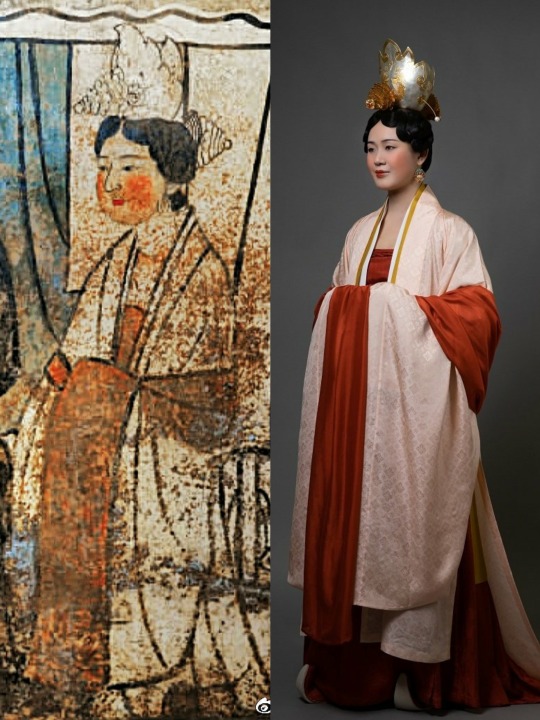


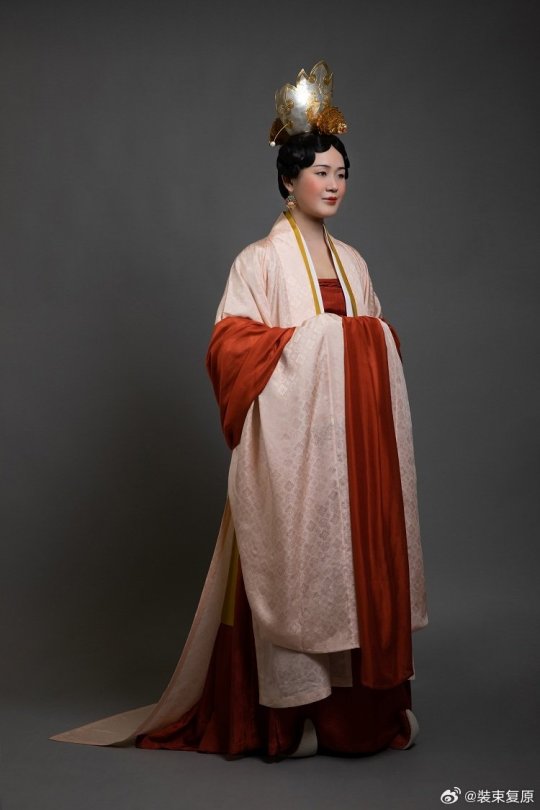
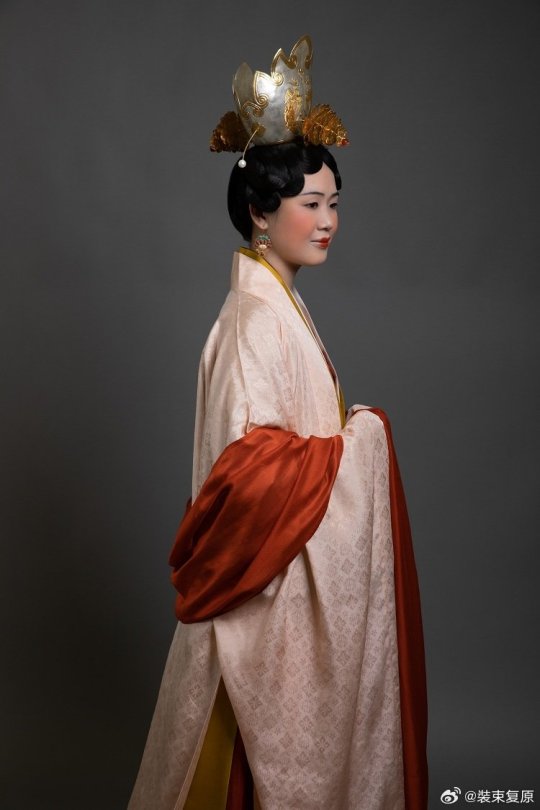
【Historical Reference Artifacts】:
Woman in the murals of the Song Dynasty tomb in Tangzhuang, Dengfeng, Henan,China.
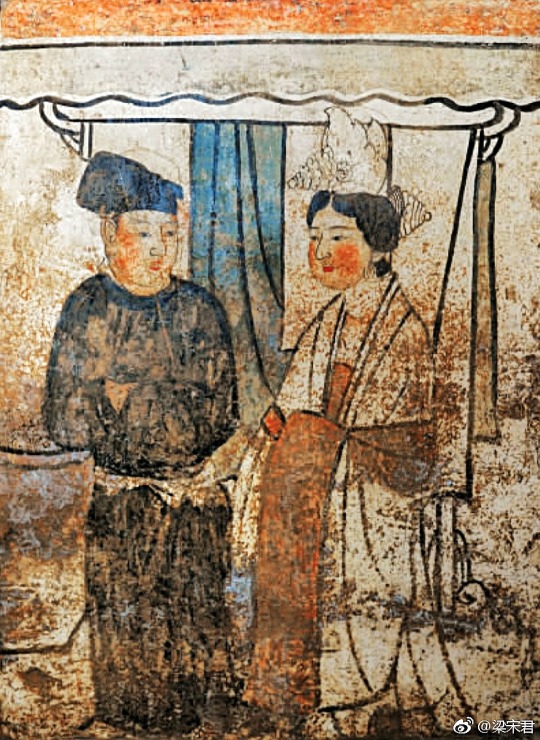

【Histoty Note】Song Dynasty (960–1279 AD)·Woman Formal Garment
The large-sleeved shirts and skirts of the Northern Song Dynasty were based on the long blouses and skirts of the late Tang and Five Dynasties, and became more refined and gradually became more ritualized. At the same time, the trend of women wearing crowns became more and more popular, and a variety of crown styles and matching hairstyles were developed.
The restoration of this outfit refers to the image of a woman in the murals of the Song Dynasty tomb in Tangzhuang, Dengfeng, Henan: her head is combed in a bun, with clouds shape hair around her temples, and a crown, which is fixed with flower hairpins on the front and back, and pearl hairpins on the left and right; Wearing a sleeved blouse, a long skirt, and a silk scarf was the attire of the common people and women attending formal occasions at that time.
At that time, married women often wore crowns, long-sleeved shirts and skirts, and shoulder-wrapped scarf when attending formal occasions or when common women got married. It gradually developed into a classic paradigm, which had an impact on popular fashion and the system of public service.
The "golden crown and xiapi金冠霞帔" that often appeared in literary works of the Song and Yuan Dynasties was developed from this classic ceremonial attire.
________________________________
📸Recreation Work:@裝束复原
🔗Weibo :https://weibo.com/1656910125/NdlVDn8JP
________________________________
#chinese hanfu#Song Dynasty (960–1279 AD)#hanfu#hanfu accessories#hanfu_challenge#chinese traditional clothing#china#chinese#chinese historical fashion#chinese history#hanfu history#漢服#汉服#中華風#Woman Formal Garment
191 notes
·
View notes
Text
Random Stuff #14: Cats in China--History (Part 2)
(Link to Part 1)
(Warning: Very long post ahead with multiple pictures!)
Cats Becoming Pets
In the book Dreams of Splendor of the Eastern Capital (《 東京夢華錄 》), a memoir by Meng Yuanlao/孟元老 about life in the then “Eastern Capital” or Bianliang/汴梁 (today known as Kaifeng/开封, located in Henan province) in Northern Song dynasty (960 - 1127 AD), there was a section called “Miscellaneous Goods”, which revealed that there were special street vendors who sold horse feed, dog food, and of course, cat food and cat treats:
“If you kept horses, there were two people who sold hay daily; if you kept dogs, there were dog food being sold; if you kept cats then there were cat food and small fish”. (“若養馬,則有兩人日供切草;養犬則供餳糟;養貓則供貓食並小魚”)
Another book that shed light on this change in more concrete terms is Fleeting Dreams of Splendor (《夢粱錄》)--which as you can probably guess from the title, is a memoir modeled after Dreams of Splendor of the Eastern Capital, this time about life in Southern Song dynasty (1127 - 1279 AD) capital city Lin’an/臨安 (today known as Hangzhou/杭州, located in Zhejiang province). In the book it was mentioned that people in the capital kept white or yellow long haired cats, called “lion cats”/獅貓, which couldn’t catch mice and were only kept for their looks, or in other words, these cats had become actual pets:
“People of the capital kept cats to catch mice, and the cats have long hair. Those that were white or yellow were called ‘lion cats’, these cats could not catch mice and were kept because they looked beautiful”. (“貓,都人畜之捕鼠,有長毛。白黃色者稱曰「獅貓」,不能捕鼠,以為美觀”)
During Song dynasty, folk customs also developed around cat adoption. Cat adoption, called pin/聘 or na/納, was treated like a “wedding” of sorts, complete with a “bride price” and a “marriage certificate” contract/契. The “bride price”, of course, was paid to the family that the cat came from, and usually took the form of some salt (this act is called ”bringing salt”/裹鹽; historically salt is a valuable commodity) or some small fish skewered on a willow branch (called “buying fish and skewering with willow”/買魚穿柳 or simply “skewer of willow”/穿柳). The contract, however, had quite a mysterious air about it and vaguely resembled a Daoist talisman:

^ Template of a cat contract, from Yuan-era (1271 - 1368 AD) book Newly Published Reference on Ying Yang and Selection of Dates/《新刊陰陽寶鑑剋擇通書》. Top says “Cat Contract”/貓兒契式. Content consists of a drawn picture of the cat in question at the center, and the terms of the contract written in a counterclockwise order that spiraled outwards from the picture of the cat, which read:
“A cat is Black Spots¹, it used to live before the bodhisattvas of the West, Sanzang² brought it home with him, and it has since been protecting Buddhist scriptures among the people. The Offeror is Moujia³ , who is selling (this cat) to a certain neighbor. All three parties⁴ has agreed upon the price of __, so __ will be returned as the contract finalizes. May the Offerer become as wealthy as Shi Chong⁵, and as long-lived as Peng Zu⁶. (From now on, the cat) Must patrol the grain storage diligently, and must catch rat thieves without slack. (The cat) Must not harm the chickens and other livestocks, and must not steal any sort of food. (The cat) Must guard the home day and night, and must not wander to the east or west. If (the cat) breaks these terms and wanders off, it shall be punished in the courtyard. __ year __ month __ day, Offeror __.”
The foot of the contract read:
”To evaluate a good tabby cat: there must be stripes on the body, and the stripes on the limbs and tail must be just right”⁷
“King Father of the East⁸ see to it that (this cat) does not wander south”
“Queen Mother of the West⁸ see to it that (this cat) does not wander north”
“Received on a day blessed by the Eminent Benefactor of Heavenly Virtues and Eminent Benefactor of Lunar Virtues⁹”
“Returned on a day blessed by the Eminent Benefactor of Heavenly Virtues and Eminent Benefactor of Lunar Virtues”
Notes:
“Black Spots”/黑斑: placeholder cat name.
Sanzang/三藏 refers to Xuanzang/玄奘, as in the real life inspiration of the character Tang Sanzang/唐三藏 in Journey to the West. It was widely believed that domestic cats had came to China from India with traveling Buddhist monks, and that they were protecting the scriptures from damage by rodents.
“Moujia”/某甲: placeholder human name.
“Three parties”: Offeror, Offeree, and Witness.
Shi Chong/石崇 was an extremely wealthy official during Western Jin dynasty (266 - 316 AD) who loved to compete with others over who was the wealthiest.
Peng Zu/彭祖 is a figure in legend and a Daoist immortal who had lived for 700 years according to legend.)
This is part of the practice of evaluating cats based on looks, called xiangmao/相貓.
King Father of the East/東王公 and Queen Mother of the West/西王母 are gods of Yang and Yin respectively.
Eminent Benefactor of Heavenly Virtues/天德貴人 and Eminent Benefactor of Lunar Virtues/月德貴人 are deities representing celestial objects, and are part of the Four Pillars of Destiny/四柱命理 concept in Chinese astrology, where basically different days and times are presided over by different celestial objects and therefore different gods. A day that is blessed by both of the aforementioned Eminent Benefactors is considered to be a very auspicious day.
As a cat owner, I could most definitely feel the helplessness and desperation emanating from this contract. Invoking deities in the hopes that the cat will do its job, not destroy stuff, and not simply run away......I’m sure many cat owners throughout the ages and across the world could sympathize with this sentiment. The special emphasis that was placed on keeping the cat from running away was probably because back then, people lived in residences that consisted of buildings surrounding a courtyard in the middle (for example, a siheyuan/四合院), so it was extremely easy for cats to run out of the residence and become lost.
Anyways......back to history.
Song-era poets wrote many poems about cats, and both Song-era and Yuan-era painters painted many works about cats (which I will cover in my next posts!). At the same time, cats were painted in Song-era tomb murals along with sparrows as a sign of longevity, since cats are māo/猫 and sparrows are què/雀, and when said together they sound like the word mào qí/耄耆, which means “elderly people”.
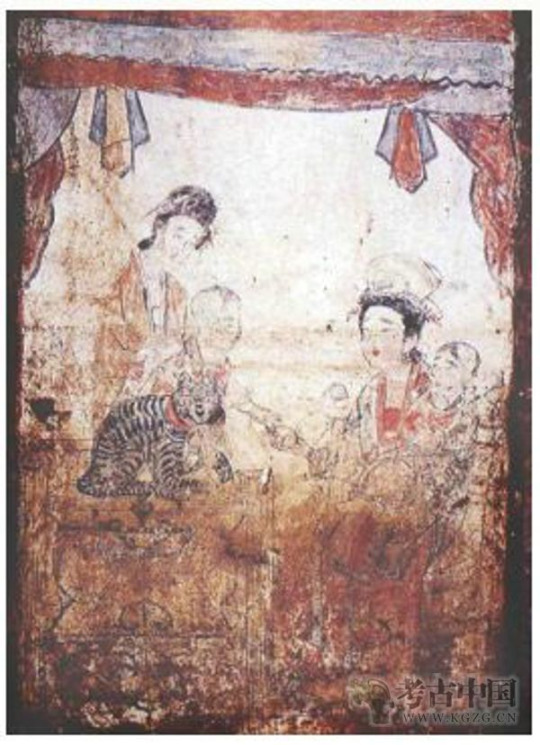
^ Tomb mural depicting a tabby cat with a sparrow in its mouth. From a Northern Song-era tomb discovered in Dengfeng, Henan.
Ming dynasty (1368 - 1644 AD) emperors were also big-time cat lovers. Of note were Emperor Xuanzong of Ming/明宣宗 (personal name Zhu Zhanji/朱瞻基), who painted cats, and Emperor Shizong of Ming/明世宗 (better known as Jiajing Emperor/嘉靖帝), who reportedly loved his cat Frosty Brows/霜眉/Shuangmei (I swear this name sounds a lot more artsy in Chinese) so much that he bestowed the title of Qiulong/虯龍 (note: Qiulong is a type of Chinese dragon that is either defined as horned or hornless depending on the source) upon it, and when Frosty Brows died, he ordered a tomb be constructed just for his cat, then ordered high-ranking officials to write eulogies for Frosty Brows:
“During Jiajing Emperor’s reign, there was a cat in the palace whose fur was slightly blue-ish except the glowing white brows, so it was named ‘Frosty Brows’. This cat understood His Majesty well, and when His Majesty went somewhere in the palace or visited a consort, it would walk ahead and lead the way. While His Majesty slept, it would stay nearby. His Majesty adored it the most. When it died, His Majesty ordered it be laid to rest at the shady side of Mt. Wansui (today called Jingshan/景山), and a stone stele was to be erected marking its grave as ‘The Grave of Qiulong’”. (嘉靖中,禁中有貓,微青色,惟雙眉瑩潔,名曰“霜眉”。善伺上意,凡有呼召或有行幸,皆先意前導。伺上寢,株橛不移。上最憐愛之。後死,敕葬萬歲山陰,碑曰‘虯龍塚’)
-- Old Rumors Under the Sun, “Within the Palace of Ming Part 3″/《日下舊聞考·宮室·明三》
“Later when a lion cat of the Palace of Eternal Longevity died, His Majesty grieved and ordered it be laid to rest at the shady side of Mt. Wansui in a coffin of gold, then ordered the senior officials to write eulogies and a funeral ritual be done, so the cat’s soul may achieve transcendence. However because the prompt seemed awkward, most of the senior officials could not perform at their usual levels, only the Scholar of Rites Yuan Weiwen came up with such words as ‘the lion metamorphosed into a dragon’, which delighted His Majesty”. (“最後西苑永壽宮有獅貓死,上痛惜之,為製金棺葬之萬壽山之麓,又命在直諸老為文,薦度超升。俱以題窘不能發揮,惟禮侍學士袁煒文中有「化獅成龍」等語,最愜聖意”)
-- Compiled Rumors of Wanli Era, Chapter 2/《萬曆野獲編·卷二》

^ A Nebelung cat (image source). According to the description above, Frosty Brows probably looked like this cat but with white markings above the eyes. RIP Frosty Brows, you shall be remembered.
Of course, Frosty Brows wasn’t the only pet cat in the palace. According to Moderate Records/《酌中志》, a book that’s mostly about life in Ming-era imperial palace (which is the same as the Palace Museum today), there was a special place called the “House of Cats”/貓兒房 that employed 3-4 servants just to take care of the cats that were favored by the emperor. These cats even had titles and nicknames: un-neutered male cats were called xiaosi/“小廝”/”lads”, neutered male cats were called laoye/”老爺”/“old men”, female cats were called yatou/”丫頭“/”gals”, and cats with titles were called maoguanshi/”貓管事”/“cat butlers” .
Speaking of royal kitties that left their names in history, Emperor Qianlong (1711 - 1799 AD) of Qing dynasty commissioned a series of paintings of his cats from the court painter and Jesuit missionary Ignatius Sichelbart (also known by his Chinese name 艾啟蒙/Ai Qimeng), and this series of 10 paintings were collectively known as 《貍奴影》, or “Cat Images” (li/“貍” or linu/“貍奴” are both archaic names for cats). Here is a Douyin video of these 10 paintings and the names of these 10 royal felines, translation courtesy of @rongzhi.
The Ins and Outs of Feline Ownership
By Qing dynasty (1636 - 1912 AD), there were two encyclopedia-like books specifically about cats, called The Compendium About Cats/《貓苑》 and The History of Cats/《貓乘》 respectively, which were extensive compilations of records and mentions of cats from older texts, including everything from folktales about cats to cat behavior to how to take care of cats, which served as guides for new cat owners back then. Although cat owners today have much more reliable and scientific sources on how to take care of cats (***Please keep in mind: this post is for fun! If you have any questions regarding the health of your cat, please ask your local veterinarian!***), books like these still provide an interesting glimpse into how cat owners of old went about taking care of their cats. Here I will be presenting a few passages from The Compendium About Cats/《貓苑》 that I found to be pretty cool or interesting:
How people used to bring cats back home and litter train them:
“The way to adopt cats: use a dou¹ or a bucket, and carry it in a cloth sack. Once you reach the home of the previous owner, ask them for a single chopstick, then put both cat and chopstick in the bucket inside the sack to bring them back home. Should you encounter potholes on the way back, you must fill the pothole with rocks before passing over it. Upon arriving back home, take the cat along to worship the household stove god and greet the resident dog. When you are done, take the chopstick and stick it in a mound of dirt in the yard, then tell the cat to never urinate or defecate inside, but still allow the cat to sleep on the bed. This way the cat will not run away”. (“納貓法,用斗或桶,盛以布袋,至家討著一棍,和貓盛桶中攜回。路遇溝缺,須填石以過,使不過家,從吉方歸。取貓拜堂灶及犬畢,將箸橫插於土堆上,令不在家撒屎,仍使上床睡,便不走徃”)
How people thought neutering changed behavior:
“Male cats must be neutered to blunt its might, so their toughness may be softened, and they will soon become plump and friendly”. (“公貓必閹殺其雄氣,化剛為柔,日見肥善“)
What to feed cats and what not to feed cats:
“Cats will grow sturdy when fed eel, and will grow plump when fed pork liver. However if cats are fed too much meat broth, it will give them intestinal issues”. (“猫食鳝则壮,食猪肝则肥,多食肉汤则坏肠”)
“Catnip”:
“Cats will become inebriated after eating mint²”... “Mint is the alcohol of cats, as such the leaves are fresh and relaxing”. (“貓食薄荷則醉”...“貓以薄荷為酒,故葉清逸”)
Treatment for fleas:
“When a cat has fleas, mash up peach tree leaves and chinaberry tree roots, boil the paste into a warm brew and bathe the cat in it to kill the fleas; otherwise rubbing camphor tree shavings over the cat also works”. (“貓生虱,桃葉與楝樹根搗爛,熱湯泡洗,虱皆死,樟腦末擦之亦可”)
Notes:
Dou/斗 (here pronounced dǒu), was historically a type of container that was originally for wine, and then became an apparatus used to measure volume (particularly for grains), so dou also doubled as a unit of volume. This unit of volume can be traced back to at least the Warring States period (770 - 221 BC), but is considered archaic today and could only be found in chengyu and other sayings that originated in history (ex: 升斗小民, “sheng and dou commoners”; since both sheng and dou are relatively small units of volume that ordinary people used in day-to-day life, this chengyu was and is still used to imply “ordinary people”).
“Mint” or “薄荷” here is likely just a species of mint. However, catnip (Nepeta cataria) is a member of the mint family, and its native range seems to span much of Eurasia, including parts of China, so it’s unclear exactly which member of the mint family this text is referring to.
Cats in the Age of the Internet
Thanks to scientific and technological advances, many people no longer adopt cats to keep rodents away, but keep them solely as companions. However, being our feline overlords, cats require a lot of affection, attention, service, and commitment from their humans, thus giving rise to the playfully self-mocking terms of "official(s) of poop-scooping”/铲屎官/chanshiguan and “slave(s) of cat(s)”/猫奴/maonu, while cats are called “cat master(s)”/猫主子/maozhuzi due to their seemingly volatile moods and behavior. People even imagined that cats were aliens from another planet called the “Planet Meow”/“喵星” who came to Earth to conquer humans with their cute appearance, thus giving rise to the term “Meowish”/“喵星人”, meaning “inhabitant of Planet Meow”. A cat who raises its hind leg up straight to lick its backside is described as “sending signals back to the mother planet (Planet Meow)”, and a common euphemism for a cat passing away is “(the cat) has returned to Planet Meow”.
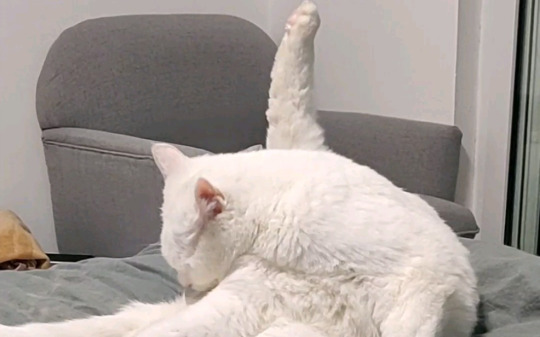
^ An inhabitant of Planet Meow sending signals back to its mother planet.
Another common internet slang for the act of kissing, sniffing, or hugging a cat out of adoration is “sniffing cat”/“吸猫”/ximao. As some might notice, the term subtly and playfully draws a parallel between the addictive aspect of cuddling with a cat and the addictiveness of illicit drugs. Finally, because 喵 (miāo), the character for “meow”, is a homophone of 妙 (miào), the character that can mean “great”, on videos where there are cats meowing clearly, you can see barrage comments from many people asking questions like “how is my exam going to go” or “how is my job interview going to go”, as a playful way of wishing for things to go smoothly in the near future.
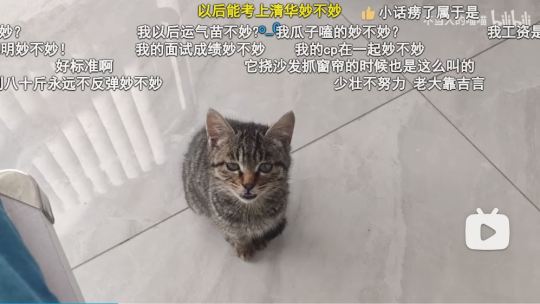
^ Some examples of these barrage comments, with people asking “how is my job interview score”, “how is my luck in the future”, “am I going to be accepted into Tsinghua University”. Video from Bilibili.
And that is all for the history of cats in China! In Part 3 and Part 4 I will cover famous paintings about cats and poems of cats, and these posts will be coming out within the next two weeks, stay tuned!
294 notes
·
View notes
Text
Today's apocryphal Sun Tzu quote
Trust: a rare commodity, incredibly easy to squander.
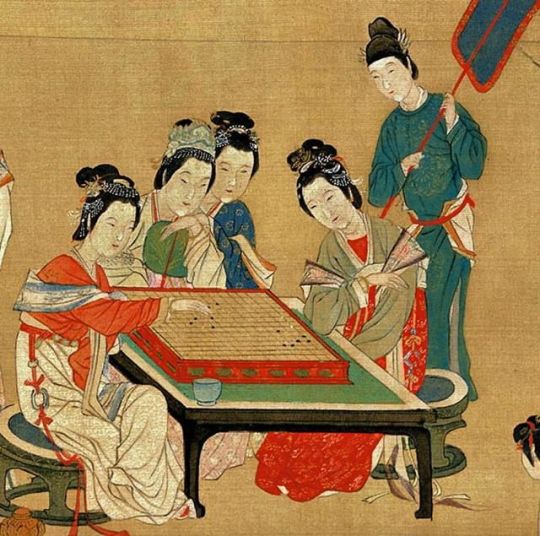
Anonymous - Palace ladies playing chess (weiqi), Song Dynasty (960-1279, AD).
38 notes
·
View notes
Text
0 notes
Text
China's colonization of Korea is a significant event in East Asian history. It marks a period of domination of Korea by China and has had lasting impacts on Korean culture, society, and politics. In this essay, we will explore the history of China's colonization of Korea and its impact on the Korean people.
China's colonization of Korea began in the Han dynasty (206 BC-220 AD), when the Chinese emperor Wu of Han established four commanderies in northern Korea. These commanderies were designed to extend China's influence in the region and to control the trade routes in northeastern Asia. The commanderies were initially successful in controlling the region, but they faced resistance from the local population and were eventually abandoned.
In the 7th century, the Tang dynasty (618-907) established a protectorate over Korea, which gave China control over Korean foreign affairs and military affairs. The Tang dynasty's influence in Korea was significant, but it was not until the Goryeo dynasty (918-1392) that China's colonization of Korea became more pronounced.
During the Goryeo dynasty, China's Song dynasty (960-1279) established a tributary relationship with Korea, which meant that Korea had to pay tribute to China in exchange for protection. The tribute system was part of China's strategy to extend its influence in East Asia and to establish a hierarchical relationship with neighboring states. However, the tribute system also allowed Korea to maintain a certain degree of independence and to pursue its own cultural and political agenda.
In the 13th century, the Mongol Empire invaded Korea, and China played a significant role in this conflict. The Mongols were able to conquer Korea with the help of Chinese troops, and they established the Yuan dynasty (1271-1368) in China. The Yuan dynasty continued China's tributary relationship with Korea, but it also brought significant changes to Korean society and culture.
During the Yuan dynasty, Korean culture was heavily influenced by Chinese culture, particularly in terms of art, literature, and philosophy. The Korean language also adopted many Chinese words and phrases, and Confucianism became the dominant philosophy in Korea. The Yuan dynasty's influence on Korean culture was significant, but it also led to tensions between Korea and China.
In the 14th century, the Ming dynasty (1368-1644) overthrew the Yuan dynasty and established a tributary relationship with Korea. The Ming dynasty's influence in Korea was less pronounced than the Yuan dynasty, but it still had a significant impact on Korean culture. The Ming dynasty's influence on Korean culture was particularly evident in architecture, where Korean buildings adopted many features of Chinese architecture.
China and Korea have had several territorial disputes over the years, which have contributed to tensions between the two countries. Here are some of the most significant territorial disputes between China and Korea:
1. The Yellow Sea boundary: China and Korea have long disputed the maritime boundary in the Yellow Sea. The boundary is important because it affects fishing rights and natural resource exploration. The dispute over the Yellow Sea boundary has led to several incidents between China and Korea, including clashes between fishing vessels and naval vessels.
2. The Han River estuary: Korea and China have also had a long-standing dispute over the Han River estuary, which is located on the border between the two countries. The dispute centers on the ownership of several islands in the estuary, which are rich in natural resources. The dispute over the Han River estuary has led to tensions and occasional clashes between China and Korea.
3. Baekdu Mountain: China and Korea have also had a dispute over the ownership of Baekdu Mountain, which is located on the border between the two countries. Baekdu Mountain is considered a sacred site by both countries, and the dispute over its ownership has been a source of tension between China and Korea.
4. Jeju Island: China and Korea have also had a dispute over the ownership of Jeju Island, which is located off the southern coast of Korea. China claims that Jeju Island was part of the ancient Chinese empire, while Korea argues that it has always been part of Korean territory. The dispute over Jeju Island has led to occasional clashes between China and Korea.
These territorial disputes have contributed to tensions between China and Korea over the years. However, both countries have also engaged in diplomatic and economic exchanges, and they have made efforts to resolve their differences peacefully.
China's colonization of Korea had a lasting impact on Korean society and culture. The Korean language and culture adopted many Chinese elements, and Confucianism became the dominant philosophy in Korea. However, the tributary relationship between China and Korea also led to tensions and conflicts between the two countries. Today, China and Korea have a complex relationship, with issues such as territorial disputes and historical grievances contributing to tensions between the two countries.
In conclusion, China's colonization of Korea is a significant event in East Asian history. It marks a period of domination of Korea by China and has had lasting impacts on Korean culture, society, and politics. While the tributary relationship between China and Korea allowed Korea to maintain a certain degree of independence, it also led to tensions and conflicts between the two countries. Today, the legacy of China's colonization of Korea continues to affect the relationship between China and Korea.
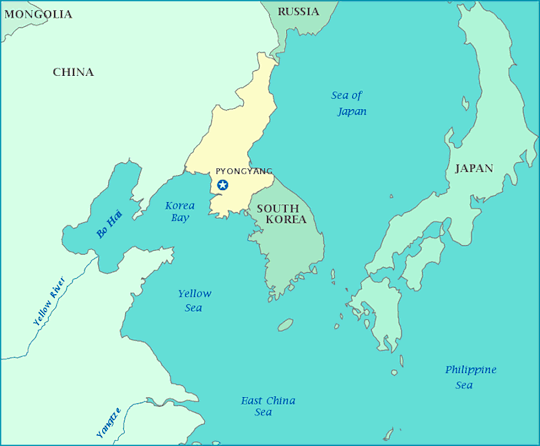
0 notes
Text

The production of Shu embroidery has a long history. As early as the Han Dynasty (206 B.C. - 220 A.D.), the name of Shu embroidery has been famous all over the world. The Han government also set up a special "royal official" in Chengdu for management. Yang Xiong, a Han Fu writer, said in his Shu Capital Fu: "The brocade embroidery looks like a piece of cloth, and the awn is boundless." This shows that Shu embroidery had a solid foundation at that time. Embroidery was based on the folk, but as a craft, it was still rare at that time, because it was a luxury and was controlled by the imperial government. The East Weaving Room and the West Weaving Room, which were subordinate to the officials of the Shaofu in the Han Dynasty, were set up for the royal family to process high-grade silk embroidery products. Embroidery is often regarded as treasure because it shows extraordinary skills. The "Records of Huayang Kingdom" of Changqu in the Jin Dynasty contains the treasures of Sichuan in detail, and lists the brocade with gold, silver, beads and jade.

At the end of the Han Dynasty and the Three Kingdoms, Shu brocade and Shu embroidery were all used to exchange horses to meet the needs of war and supplement the financial deficit. From the Han Dynasty to the Five Dynasties and Ten Kingdoms (907-960 AD), the relatively stable situation in Sichuan created favorable conditions for the development of Shu embroidery. The increasing social demand stimulated the rapid development of Shu embroidery industry. By the Song Dynasty (960-1279 AD), the development of Shu embroidery had reached its peak, and the embroidery was unparalleled in terms of technology, production, sales and exquisite degree. After the middle of the Qing Dynasty (1644-1911 AD), Shu embroidery gradually formed an industry. At that time, all county governments set up "persuasion bureaus" to encourage the production of Shu embroidery. After the founding of the People's Republic of China, Chengdu Shu Embroidery Factory was set up in Sichuan, bringing the development of Shu embroidery technology into a new stage, with continuous technological innovation.

The development of Shu embroidery is based on the richness of Sichuan, especially the quality and quantity of silk produced (the famous Southern Silk Road started in Chengdu). Therefore, in the Tang and Song Dynasties, "the people who weave silk with fine and beautiful texture are poor in the world" ("History of the Song Dynasty · Geography Annals"), "the people who weave such things as ice-wan embroidery, the number of which is" the world "(" Continuation of the Chronicles of Zizhi Tongjian "). Chengdu is prosperous and prosperous, enjoying life and performing arts. It is said in history that "many adults are skillful, and the beauty of silk and brocade carvings is almost the same as that of the previous country"). The good social and material conditions and the abundant spiritual atmosphere make the embroidery art wonderful.
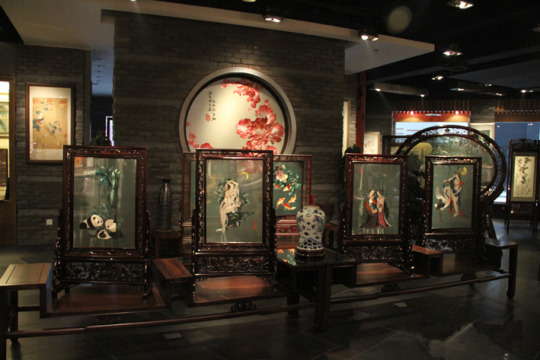
0 notes
Text
jasmine
Jasmine tea is a type of tea that has been jasmine tea for centuries in many different parts of the world. Originating in China, it has become a favorite in many cultures, including those of Japan, Thailand, and Vietnam. The tea is made from green or white tea leaves that are scented with jasmine jasmine tea benefits, resulting in an aromatic and flavorful tea. Jasmine tea has a light and delicate flavor, with a hint of sweetness. It is often served as a hot beverage, although some people also enjoy it cold. The aroma of jasmine green tea tea is one of its most distinctive features. The scent of jasmine blossoms is said to be calming and refreshing, and can help to reduce stress and anxiety. Jasmine tea is not only delicious but also has many health benefits. It contains antioxidants that can help protect cells against damage caused by free radicals. It is also known to boost the jasmine pearl tea system, help lower blood pressure, and reduce inflammation. In addition, jasmine tea may help to improve digestion and metabolism, and can even help to reduce the risk of certain cancers. There are many different ways to make jasmine tea. It can be prepared with loose leaves, or jasmine green tea benefits tea bagsJasmine tea is a fragrant and flavorful beverage that has been used in traditional Chinese medicine for centuries. Rich in antioxidants, it has many health benefits, including improving digestion, boosting the immune system, and protecting against certain types of jasmine tea caffeinated. It also has anti-inflammatory properties, so it can help reduce the symptoms of arthritis and other inflammatory jasmine flower tea. Additionally, it can help to reduce stress and improve sleep quality. Jasmine tea is a great source of polyphenols, which are compounds that have antioxidant properties. These herbal jasmine tea help to protect the body from damage caused by free radicals, which can lead to cell damage and diseases. Additionally, the polyphenols in jasmine tea can help reduce inflammation in the jasmine green milk tea, which can help relieve the symptoms of arthritis and other inflammatory conditions. The antioxidants in jasmine tea can also help boost the immune system, making it easier for the jasmine benefits to fight off viruses and infections. Additionally, jasmine tea can help protect against certain types of cancer, such as stomach, colon, and breast cancer. Jasmine tea can also help improve jasmine tea health benefits and reduce bloating. It can also help to relieve stress, improve sleep quality, and reduce symptoms of anxiety and depression. Jasmine green tea is one of the most popular types of tea in the world. It is a fragrant and flavorful tea made from high-quality best jasmine tea tea leaves that have been scented with jasmine blossoms. The sweet and refreshing flavor of jasmine green tea has made it a favorite among tea drinkers for centuries. The origins of jasmine green tea are thought to be from China, where it has been enjoyed for centuries. It is believed to have jasmine pearls been developed in the Song Dynasty (960 to 1279 AD). The tea was created by scenting green tea leaves with freshly picked jasmine flowers. This process was repeated several times until the desired flavor and aroma had been achieved. Jasmine jasmine tea pregnancy tea is made using a variety of methods. The most common is to use jasmine-scented green tea leaves that have been dried and rolled into small pellets. The pellets are then placed in a pot of boiling water and jasmine dragon tea to steep for several minutes. The resulting tea is light and fragrant with a delicate flavor. Jasmine green tea has several health benefits. It is rich in antioxidants, which can help dragon pearl jasmine tea your body from damage caused by free radicals. It is also believed to help
0 notes